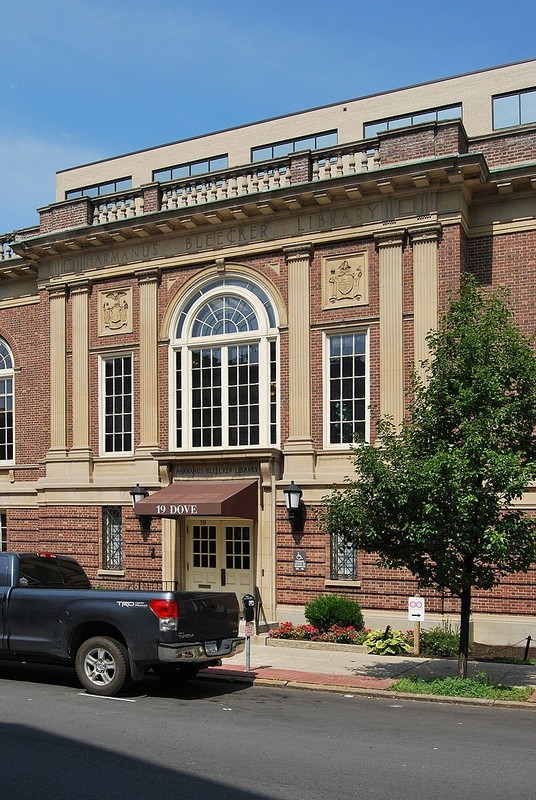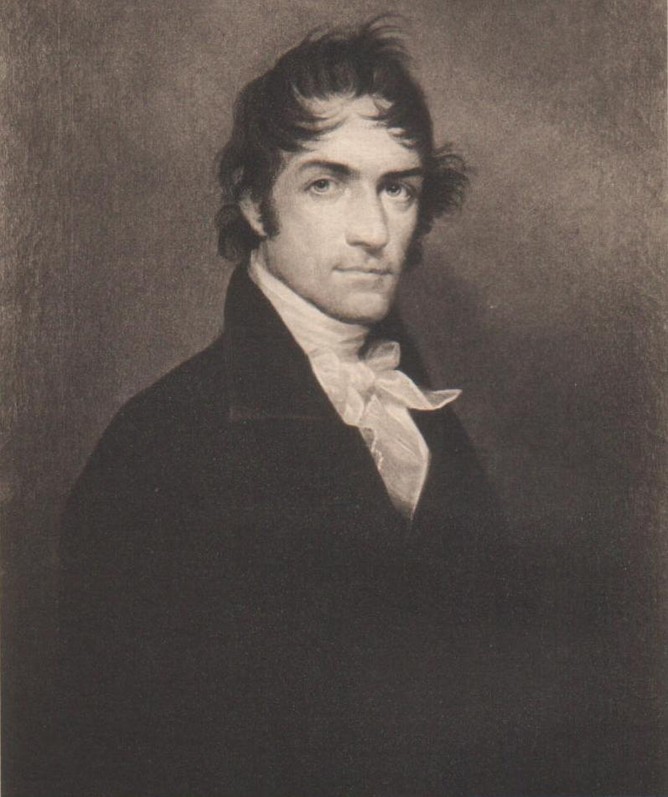Harmanus Bleecker Library
Introduction
Text-to-speech Audio
The Harmanus Bleecker Library was the first building in Albany that was intentionally designed to hold a library. Completed in 1924, it is named after noted local politician and diplomat Harmanus Bleeker (1879-1949), who served in the U.S. House of Representatives and as Minister to the Netherlands. Now an office building, the former library is one of Albany's best examples of Classical Revival architecture. The building features several large arched windows with fanlights, decorative cast stone trim, and an elegant main entrance with fluted pilasters (columns), two coats of arms, and an arched window. In 1996, the building was added to the National Register of Historic Places in recognition of its architecture and its association with Bleecker.
Images
A fine example of Classical Revival architecture, the Harmanus Bleecker Library was built in 1924.

Harmanus Bleeker (1879-1949) served in the U.S. House of Representatives and as Minister to the Netherlands.

Backstory and Context
Text-to-speech Audio
Harmanus Bleecker was born in Albany on October 9, 1779, to a prominent family. His great-grandfather was Jan Jansen Bleecker, who was the first of the family to live in North America. Jansen served as Albany's first alderman, first recorder, and first mayor. Bleecker's father, Jacob, was a leading Albany merchant, and his mother, Elizabeth, was the daughter of a local fur trader.
In 1797, Bleecker became a law clerk at the law firm of John Vernon Henry, who also served in the state legislature. After Bleecker entered the bar in 1801, he opened a law practice in Albany with a partner, Theodor Sedgewick, Jr. In addition to his law practice, Bleecker was also a member of the Board of Trustees of the Boy's Academy, a member of the Board of the Albany Bible Society, a member of the Board of the State Normal School, and a State Commissioner in 1820. In 1811, when he was 32, he was elected to Congress and served one term in office. He then served in the New York State Assembly between 1814 and 1816.
He retired in 1838 and started to travel, which included going to the Netherlands. The next year, he unexpectedly learned that President Martin Van Buren appointed him chargé d'affaires (minister) to the Netherlands. He served in that role until 1842. It was there that he met his wife, Cornelia, who was 28. They married in 1843 and returned to Albany. Bleecker retired for good this time and died in 1849. In his will, he stipulated that Cornelia would acquire all of his wealth (around $80,000) on the condition that she donate the money to the city of Albany after she died. Cornelia returned to the Netherlands and in 1851 married Hendrick Coster, a distant cousin. They lived in Albany for a time but eventually moved back to the Netherlands. To ensure Bleecker's estate would be left to the city of Albany, she transferred it to one of Bleecker's friends, John Pruyn, before she left.
Pruyn, however, died before Cornelia did. The estate was then distributed by Judge J. Parker to the Young Men's Association, which used the money to build a multipurpose public hall building housing a library, music hall, playhouse, and a movie theater. By 1919, the Association decided it wanted to only operate a library. They sold the public hall and used the funds from the sale to build the Harmanus Bleecker Library.
Sources
"Harmanus Bleecker Papers, 1715-1872." New York State Library. Accessed January 28, 2024. https://www.nysl.nysed.gov/msscfa/sc9902.htm.
Pickney III, Leo. "Harmanus Bleecker Library." National Park Service - National Register of Historic Places Nomination Form. https://catalog.archives.gov/id/75316237.
Both images via Wikimedia Commons
